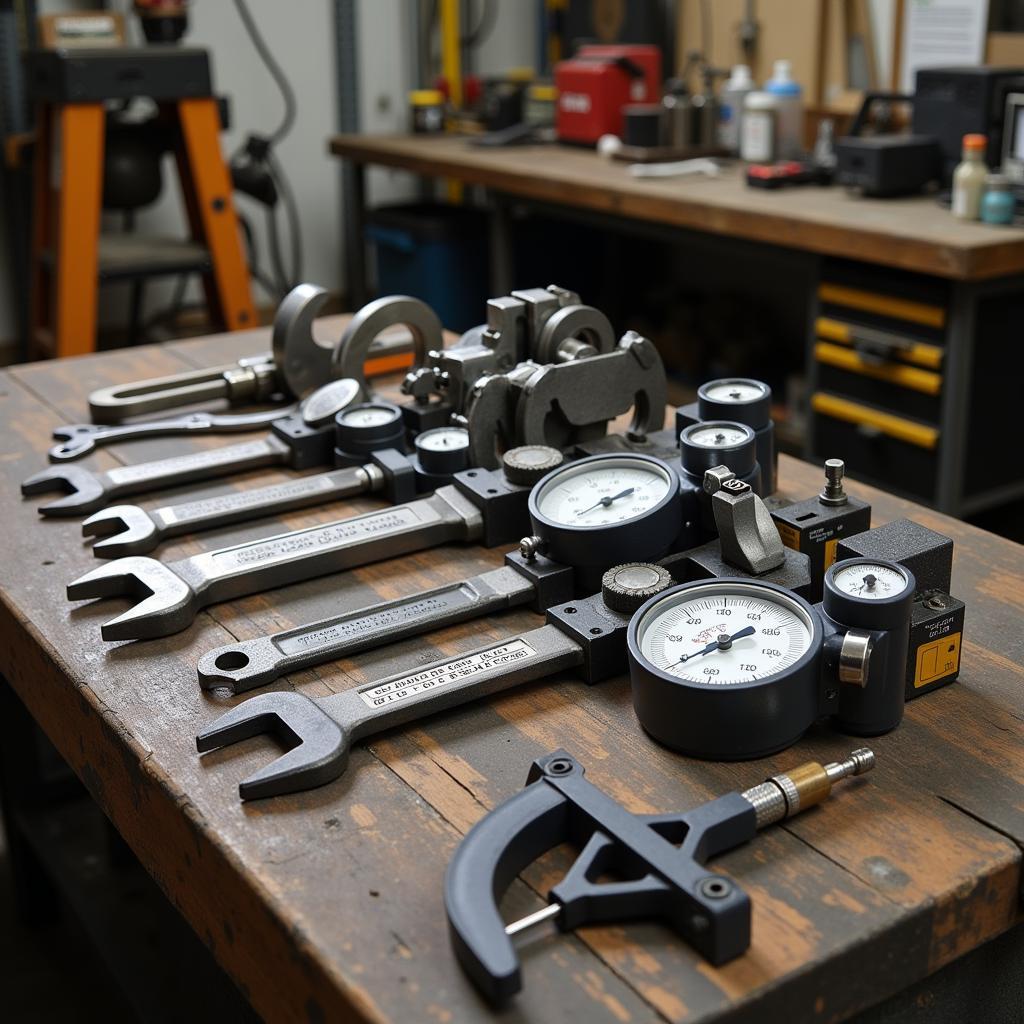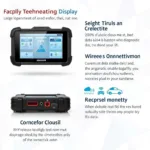Railroad car maintenance tools are crucial for ensuring the safety and efficiency of rail transport. These specialized tools play a vital role in keeping freight and passenger cars in optimal condition, minimizing downtime, and preventing costly repairs. From simple hand tools to advanced diagnostic equipment, understanding the right tools for the job is essential for any railroad maintenance professional. This guide explores the essential tools used in railroad car maintenance, offering insights into their functions and importance. Check out more about historic railroad tool cars at the Fort Wayne Railroad Historical Society tool car.
Critical Tools for Railcar Inspection and Repair
Railcar maintenance involves a wide range of tasks, from routine inspections to complex repairs. Having the correct tools readily available is crucial for effective and efficient maintenance procedures. Some of the most commonly used tools include specialized wrenches, gauges, and measuring instruments designed for the unique demands of railcar components. These tools are essential for tasks like inspecting wheels, brakes, and couplings, ensuring that they meet strict safety standards.
- Impact Wrenches: Powerful tools used for loosening and tightening large bolts and nuts found on railcar underframes and other heavy components.
- Torque Wrenches: Precisely apply the correct torque to fasteners, crucial for maintaining structural integrity and preventing failures.
- Rail Gauges: Measure the gauge (distance between rails) to ensure proper track alignment.
- Wheel Flange Thickness Gauges: Measure the thickness of wheel flanges to ensure they are within safe operating limits.
 Railcar Inspection Tools: Wrenches, Gauges, and Measuring Instruments
Railcar Inspection Tools: Wrenches, Gauges, and Measuring Instruments
Heavy-Duty Equipment for Railcar Maintenance
Beyond hand tools, heavy-duty equipment is essential for larger maintenance tasks. Cranes and hoists are used for lifting heavy components, while specialized machinery is employed for tasks like wheel truing and axle replacement. These tools require specialized training and safety procedures due to their size and power.
- Hydraulic Jacks: Essential for lifting railcars to access undercarriage components for inspection and repair.
- Wheel Truing Machines: Used to reshape worn or damaged wheels, ensuring smooth and safe operation.
- Ultrasonic Testing Equipment: Used for non-destructive testing of railcar axles and other critical components to detect internal flaws.
What are the Most Common Railroad Car Maintenance Procedures?
Regular maintenance procedures are vital for ensuring the longevity and safe operation of railroad cars. These procedures involve a combination of visual inspections, component testing, and preventative maintenance. Some of the most common procedures include brake inspections, wheel replacements, and coupler maintenance. These tasks require specific tools and expertise to ensure they are performed correctly. For more insights, you might be interested in our article on the Union Pacific tool car.
The Importance of Modern Diagnostic Tools in Railroad Car Maintenance
Modern diagnostic tools are revolutionizing railroad car maintenance. These tools use advanced technologies to detect potential problems before they become major issues, reducing downtime and improving safety. These tools, including computerized diagnostic systems and sensors, provide real-time data on the condition of various railcar components, allowing for proactive maintenance and preventing costly breakdowns.
- Computerized Diagnostic Systems: These systems connect to the railcar’s onboard computer to retrieve diagnostic data and identify potential problems.
- Vibration Sensors: Detect unusual vibrations in wheels, axles, and bearings, indicating potential wear or damage.
- Thermal Imaging Cameras: Detect hot spots in electrical systems and bearings, which can indicate potential failures.
Conclusion
Railroad car maintenance tools are essential for ensuring the safety and efficiency of the railway industry. From basic hand tools to sophisticated diagnostic equipment, these tools play a vital role in keeping railcars in optimal working order. By understanding the importance of these tools and investing in the right equipment, rail operators can minimize downtime, reduce maintenance costs, and ensure the safe and reliable operation of their fleet. Proper maintenance utilizing the correct railroad car maintenance tools is paramount for a robust and dependable rail system.
FAQ
-
What are the most important safety precautions when using railroad car maintenance tools? Always follow proper safety protocols, wear appropriate personal protective equipment (PPE), and use tools according to manufacturer instructions.
-
How often should railroad car maintenance be performed? Maintenance schedules vary depending on the type of car and its usage, but regular inspections and preventative maintenance are crucial.
-
Where can I find training on how to use specialized railroad car maintenance tools? Several training programs and certifications are available through industry organizations and technical schools.
-
What is the role of technology in modern railroad car maintenance? Technology plays an increasingly important role, with advanced diagnostic tools and software helping to improve efficiency and accuracy.
-
What are some common challenges in railroad car maintenance? Challenges include the harsh operating environment, the need for specialized tools and expertise, and the pressure to minimize downtime.
-
How can I ensure the quality of railroad car maintenance tools? Purchase tools from reputable suppliers and ensure they meet industry standards and specifications.
-
What is the future of railroad car maintenance tools? The future likely involves greater automation, more sophisticated diagnostic tools, and increased use of data analytics to optimize maintenance strategies.
Need help with your car diagnostics? Contact us via WhatsApp: +1(641)206-8880, Email: [email protected] or visit us at 910 Cedar Lane, Chicago, IL 60605, USA. We have a 24/7 customer service team ready to assist you.
